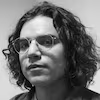What is Halloween and how did it originate in the US?
Halloween in the United States has its roots in the traditions of European immigrants, particularly the Irish and Scottish. Here’s what you need to know about the holiday

The word “Halloween” originates from “All Hallow’s Eve,” the evening before the Christian holy days of All Hallow’s Day on November 1 and All Souls’ Day on November 2. Like other major dates in Christianity, it involved vigils that began the night before. These three days are called Allhallowtide, and during it, Christians honored all saints and prayed for recently departed souls.
It is believed that today’s Halloween traditions were also influenced by folk customs and beliefs from the Celtic-speaking countries, particularly the Gaelic festival Samhain, which is still celebrated in some places and has pagan origins. Samhain takes place on November 1, marking the end of the harvest season and the beginning of winter, or “the darker half” of the year. It starts on the evening of October 31, since the Celtic day began and ended at sunset. Early literature says that during Samhain, ancient burial mounds were open, which were seen as portals to the Otherworld (the Celtic realm of deities and possibly the dead). Since the modern era, the souls of dead people were thought to revisit their homes seeking hospitality, and a place was set at the table for them during a meal (similar to today’s Día de Muertos in Mexico). People also began going door-to-door in costume and reciting verses in exchange for food or other gifts.
In the first century AD, the Roman Empire conquered Celtic territories, and their festivals began to blend with Celtic traditions. Some believe that the Roman festivals of Feralia, which honored the dead, and Pomona, which celebrated the Roman goddess of fruit and trees, also influenced Halloween. In the 7th century, the Catholic Church attempted to Christianize pagan festivals, which led to the Saints’ days.
It is believed that Samhain and the Christian Saints holidays influenced each other and the modern Halloween.
How did Halloween develop in the U.S.?
In colonial America, Halloween as we know it was not celebrated. The Puritans of New England strongly opposed the holiday and rejected many others. Some historians say that Anglican colonists in the southern United States and Catholic colonists in Maryland recognized All Hallow’s Eve in their church calendars. However, it didn’t become a major holiday until after mass Irish and Scottish immigration in the 19th century.
The Irish and Scottish immigrants brought with them customs such as carving turnips, jack-o’-lanterns, and lighting bonfires, and these traditions began to blend with those of other communities in America (in the U.S., the tradition of carving pumpkins was associated with harvest time but later became part of Halloween). In Cajun areas (influenced by the French), there were night masses and people put blessed candles on graves, with families sometimes spending the night at the graveside.

Although some believed that customs like trick-or-treating originated in the Americas, there are records of children dressing up in costume and going from door to door for food or coins in 19th-century Scotland. Ruth Edna Kelley, who wrote the first book-length history of Halloween in the U.S., said: “All Halloween customs in the United States are borrowed directly or adapted from those of other countries.”
Gradually, the holiday assimilated into mainstream society and was celebrated across the country by all types of people by the early 20th century (although some religions like Judaism and Islam forbid partaking in Halloween customs). Modern times saw the commercialization of Halloween in the U.S. with retailers promoting Halloween-themed products, costumes, and decorations, and other elements like witches and scarecrows were adopted. In the latter half of the century, Hollywood, horror movies, and popular culture played a role in shaping new traditions, like It’s the Great Pumpkin, Charlie Brown and the Halloween film series. Through American influence, this new “version” of Halloween spread to many other countries, including the rest of the American continent, Europe, and some parts of Asia.
Sign up for our weekly newsletter to get more English-language news coverage from EL PAÍS USA Edition
Tu suscripción se está usando en otro dispositivo
¿Quieres añadir otro usuario a tu suscripción?
Si continúas leyendo en este dispositivo, no se podrá leer en el otro.
FlechaTu suscripción se está usando en otro dispositivo y solo puedes acceder a EL PAÍS desde un dispositivo a la vez.
Si quieres compartir tu cuenta, cambia tu suscripción a la modalidad Premium, así podrás añadir otro usuario. Cada uno accederá con su propia cuenta de email, lo que os permitirá personalizar vuestra experiencia en EL PAÍS.
¿Tienes una suscripción de empresa? Accede aquí para contratar más cuentas.
En el caso de no saber quién está usando tu cuenta, te recomendamos cambiar tu contraseña aquí.
Si decides continuar compartiendo tu cuenta, este mensaje se mostrará en tu dispositivo y en el de la otra persona que está usando tu cuenta de forma indefinida, afectando a tu experiencia de lectura. Puedes consultar aquí los términos y condiciones de la suscripción digital.
More information
Archived In
Últimas noticias
Sinaloa Cartel war is taking its toll on Los Chapitos
Venezuela hardens its ‘revolutionary state’ project amid pressure from Trump
Sydney Sweeney, the actress praised by Trump: ‘Women are up against what society wants them to be’
The Bolsonaro surname: An advantage or liability in Brazil’s 2026 presidential elections?
Most viewed
- Reinhard Genzel, Nobel laureate in physics: ‘One-minute videos will never give you the truth’
- Pablo Escobar’s hippos: A serious environmental problem, 40 years on
- Charles Dubouloz, mountaineering star, retires at 36 with a farewell tour inspired by Walter Bonatti
- Why we lost the habit of sleeping in two segments and how that changed our sense of time
- The fall of a prolific science journal exposes the billion-dollar profits of scientific publishing











































